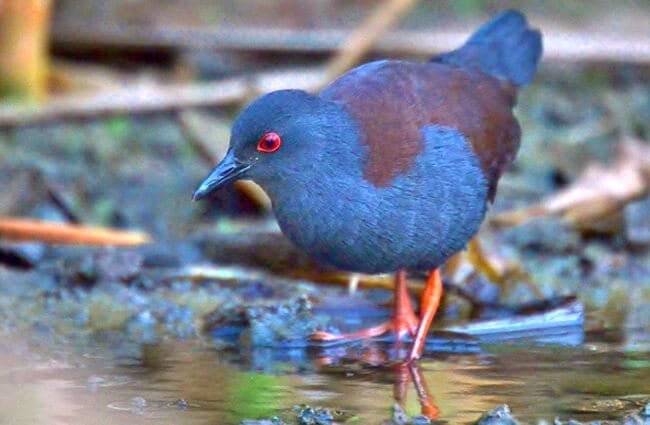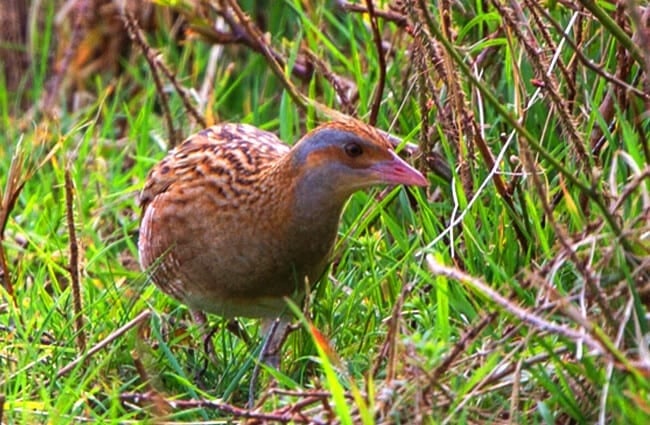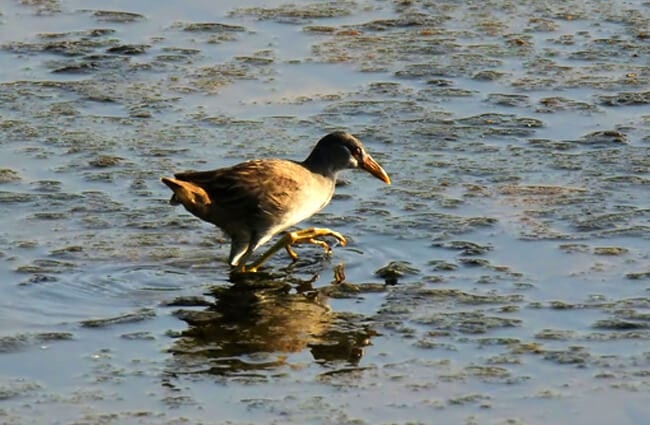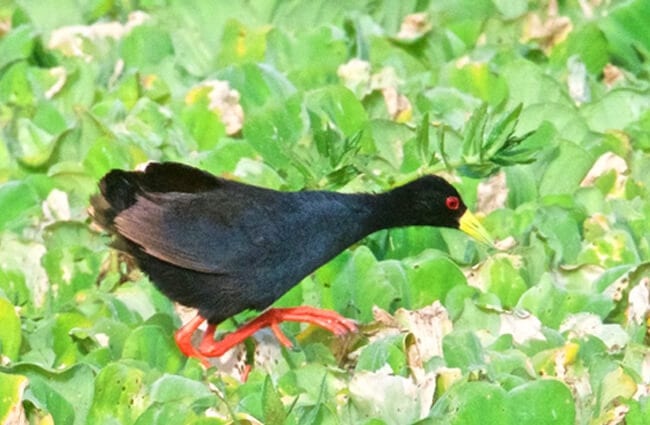Crakes, often elusive and mysterious birds, represent a fascinating group within the rail family. These medium to small sized birds are masters of camouflage, preferring the dense vegetation of wetlands. While many are familiar with more common rails, the world of the crake offers a unique glimpse into avian adaptation and behavior. This comprehensive guide delves into the intricacies of crake biology, ecology, and cultural significance, offering insights for students, animal enthusiasts, and aspiring zoologists alike.

Understanding the Crake
The term “crake” doesn’t refer to a single species, but rather a grouping of several rails within the family Rallidae. Globally, there are around ten recognized species, exhibiting varying degrees of similarity and distinct characteristics. Common examples include the Corn Crake, Spotted Crake, Baillon’s Crake, and the Black Crake. They share several traits: a secretive nature, preference for dense cover, and a characteristic call, which contribute to their enigmatic reputation.
Habitat and Distribution
Crakes are broadly distributed across continents, with the greatest diversity found in Africa and Asia. Their primary habitat is wetlands—marshes, swamps, bogs, and the edges of lakes and rivers. The Corn Crake, for instance, favors cereal crops and grasslands with damp conditions, while the Spotted Crake is more frequently found in dense, reedy vegetation near water. Many species are migratory, traveling long distances to breed in suitable habitats and overwinter in warmer climates. Habitat loss and degradation, particularly due to agricultural expansion and wetland drainage, pose significant threats to crake populations.

Evolutionary History
The evolutionary origins of crake species are complex. The Rallidae family is ancient, with fossil records dating back to the Eocene epoch. The diversification of crake species likely occurred through a combination of geographic isolation, adaptation to specific wetland environments, and the development of unique behavioral traits. Phylogenetic studies, analyzing genetic data, continue to refine our understanding of crake relationships and evolutionary pathways. It is believed that the tendency towards secretive behavior and reliance on dense vegetation has been a recurring theme in crake evolution, contributing to their present day ecological niche.
Diet and Feeding Habits
Crakes are omnivorous birds with a varied diet. They forage for invertebrates—insects, worms, snails, and crustaceans—in the mud and vegetation of wetlands. Seeds, grains, and other plant matter also constitute a significant portion of their diet, particularly during the non-breeding season. Crakes typically feed on the ground, probing with their bills in the substrate. Their diet is influenced by seasonal availability and habitat type. The Corn Crake, for example, readily consumes grain seeds in agricultural fields.

Mating and Reproduction
Crake mating systems vary across species. Many exhibit monogamous pairing, forming long term bonds between a male and female. Breeding typically occurs during the spring and summer months. Nests are constructed on the ground, concealed within dense vegetation. They are often built using grasses, reeds, and other plant materials. Clutch sizes range from a few to over a dozen eggs, depending on the species. Both parents participate in incubation and chick rearing. Chicks are precocial, meaning they are relatively mobile and independent shortly after hatching. They are fed by their parents for several weeks, learning essential foraging skills before becoming fully independent.
Ecological Role and Interactions
Crakes play a vital role in wetland ecosystems. As insectivores and seed predators, they help regulate populations of invertebrates and plant species. They also serve as prey for larger birds of prey, mammals, and reptiles. Their presence or absence can be an indicator of wetland health and environmental conditions. Crakes interact with other waterbirds, often foraging alongside ducks, herons, and waders. Competition for resources can occur, but generally crakes occupy a unique niche due to their secretive behavior and preference for dense vegetation.

Crakes and Human Culture
Crakes have a varied history in human culture. In some regions, they have been traditionally hunted for food. However, due to declining populations, hunting is now restricted or prohibited in many areas. Crakes also feature in folklore and local traditions, often associated with wetland landscapes and agricultural practices. Their elusive nature has contributed to a sense of mystery and fascination. Some species are considered symbols of good luck or fertility in certain cultures. The calls of crake, often heard at dusk or dawn, have inspired poets and musicians.
Encountering a Crake in the Wild
Spotting a crake requires patience and a keen eye. Due to their secretive nature, they are often difficult to observe directly. The best time to look for crakes is during the breeding season, when they are more vocal and active. Focus on searching dense vegetation near water, marshes, swamps, and the edges of lakes and ponds. Listen for their distinctive calls, often a series of rapid “kek-kek” or “crak” sounds. If you encounter a crake, observe it from a distance to avoid disturbing its behavior. Respect its habitat and refrain from any actions that could harm it or its offspring.
Crake Conservation Status and Threats
Many crake species are facing population declines due to a variety of threats. Habitat loss and degradation, primarily through wetland drainage and agricultural expansion, is the most significant challenge. Pollution, climate change, and unsustainable hunting practices also contribute to their vulnerability. Several species are listed as threatened or endangered on the IUCN Red List. Conservation efforts include wetland restoration, habitat protection, and sustainable land management practices. Public awareness campaigns and educational programs are also crucial for promoting crake conservation.

Crake Care in Captivity
Caring for crakes in captivity requires specialized knowledge and facilities. They need large enclosures with ample vegetation, water features, and secluded nesting areas. Their diet should consist of a varied mix of invertebrates, seeds, and grains. Maintaining appropriate humidity and temperature levels is crucial for their health and well being. Crakes are sensitive to stress, so it is important to minimize disturbance and provide a quiet environment. Regular veterinary check-ups and monitoring of their behavior are essential. Captive breeding programs can play a valuable role in conserving endangered crake species.
Interesting Crake Facts
- Some crake species can run surprisingly fast through dense vegetation.
- Their legs are strong and well adapted for walking on soft substrates.
- Crakes often use their bills to probe for food in the mud and vegetation.
- They are capable of swimming and diving in water.
- Their calls vary significantly between species, serving as important communication signals.
- The Spotted Crake undergoes a complete molt of its flight feathers during the non-breeding season, which can temporarily reduce its flight capability.

Crakes, with their enigmatic presence and ecological importance, deserve our attention and conservation efforts. By understanding their biology, ecology, and threats, we can work towards ensuring their survival for generations to come. These elusive birds are a testament to the biodiversity of our wetlands and a reminder of the interconnectedness of life on Earth.

![Red Angus Closeup of a beautiful Red Angus cowPhoto by: U.S. Department of Agriculture [pubic domain]https://creativecommons.org/licenses/by/2.0/](https://animals.net/wp-content/uploads/2020/03/Red-Angus-4-238x178.jpg)




![Red Angus Closeup of a beautiful Red Angus cowPhoto by: U.S. Department of Agriculture [pubic domain]https://creativecommons.org/licenses/by/2.0/](https://animals.net/wp-content/uploads/2020/03/Red-Angus-4-100x75.jpg)

